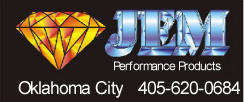
Turbo and Super charging

Turbo and Super charging
| Cooling | Probably
the most popular and cost effective way to increase performance through
the entire operating range of an engine. Small displacement engines all
suffer from an important drawback as compared to American V8 engines, they
all have a lack of torque, Especially low end torque.
Keep in mind that we are discussing streetable combinations here and not full out race cars. That means a car that can cruise reliably around town and on the highway, with greatly improved performance, while retaining stock type reliability. Supercharging, including turbocharging, effectively increases the size of an engine. It pressure feeds air and fuel into each cylinder, thus increasing the amount of mixture normally held in each cylinder. This in turn increases horse power and torque output. So in effect, a 158 cubic inch engine, with a well matched turbo at 15-18 lbs. of boost can perform like a 350 cubic inch engine or more. That is extremely simplistic of course, because force feeding fuel mixtures also effectively increases the camshaft profiles, thermal efficiency, and flame travel characteristics, just to name a few. There are right and wrong ways to go about supercharging an engine. Adding a turbo or blower to a normally aspirated car is discussed in the Adding a supercharger section. From this point on, it is assumed that the modifications and additions here are being added to an already turbocharged vehicle. We will concentrate on upgrading and modifying stock parts, as well as adding aftermarket equipment and controls. |